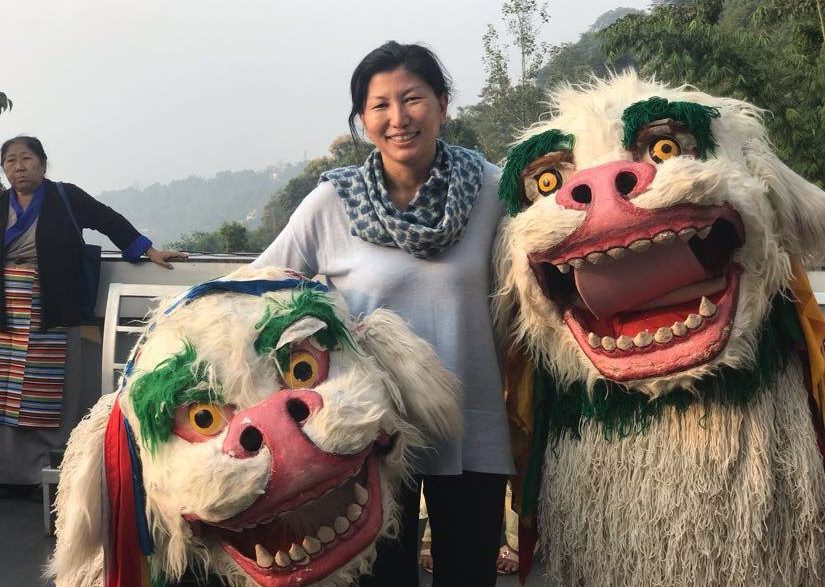
12 Dec From the field – Tibetan culture in Kalimpong
Tashi Delek everyone!
I recently came back from my field monitoring trip to Kalimpong in India where, with the partnership of local organisation Gangjong Doeghar and the Australian Tibetan Society, we are promoting Tibetan Performing Arts and Careers. There are two components to this project – training young people from local schools in music and the performing arts, and music training for blind and visually impaired young people.
Kalimpong, in the Himalayan region of West Bengal in India, has struggled through 30 years of violent, political conflict and in my recent trip, it was sad to see the battered town. Unfortunately, the role of women has regressed under a climate of turmoil and fear. In the midst of this, Ah Dogha la, a talented artist and craftsman with a vision to revive and promote Himalayan Tibetan performing arts, has given young people of the area the opportunity to learn music and explore their talents.
AHF, through your generous support, is a proud partner in this vision. I am glad to report that Gangjong Doeghar has gained a strong credibility among the Himalayan people and Tibetan performance artists. They are keeping alive the Tibetan performing arts and giving hope and joy to their students, including those challenged by disability. Many students have gone on to become performing artists or instructors, earning much needed income.
We are also grateful to Namgyel Tsering, the President of the Australian Tibetan Society, who has been a mentor to Gangjong Doeghar and supports AHF in strengthening the project.
Elsewhere in Zanskar, a remote part of Ladakh in the state of Jammu and Kashmir in the Indian Himalayas, the Snow Leopard Conservancy India Trust (SLC) is embarking on a new project with AHF’s support. I am excited to inform you that we have recently finalised the project design and agreement for this project with SLC director and senior scientist Dr. Tsewang Namgail, whom some of you met at our Gala dinner this year in Sydney. The project is titled Integrating People, Wildlife and Climate Change (IPWCC) in Zanskar.
The goal of this project is to improve local livelihoods through promoting coexistence between people and wildlife in the context of a changing climate, where locals have abandoned their ancestral villages due to shortage of water, making them the first climate refugees in Ladakh. The project will work towards increasing awareness on climate change impacts and developing local solutions to address them. These include securing local livelihoods by supporting bear-proof canisters to protect grain storage, building improved corrals that snow leopards can’t get inside and constructing an ice reservoir to meet the water shortage problem of the villagers of Kumic. The project will also engage the community in citizen science initiatives to record climate change. In the coming year, we will share with you the progress on this innovative and much needed project.
As always, thank you everyone for your continued support for the Himalayan people!
Tshering Lama O’Gorman
Head of Programs, Australian Himalayan Foundation

